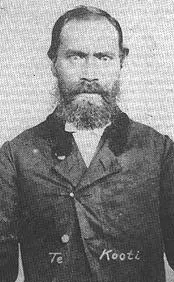History
Te Kuiti town and the Waitomo District are situated within the northen King Country, a large tract of the western central North Island. The name King Country arose because this was the region in which King Tawhiao sought refuge after the Waikato land wars. He prohibited the entry of Europeans to the area.
To the Maori people, the region was known as Te Rohe Potae. Within Te Rohe Potae there were five tribes who signed an agreement with the Crown which eventually allowed the North Island Main Truck Railway Line to come into the area. The five tribes were Ngati Maniapoto, Ngati Hikairo, Ngati Raukawa, Ngati Tuwharetoa and Whanganui. It was also to this area that the rebel Te Kooti fled in 1871, and in return for sanctuary left as a gift for the Maniapoto people, Te Tokanganui-a-noho, the carved meeting house which now stands at the south end of Te Kuiti's main street.
Te Kuiti was also the headquarters for paramount Maniapoto chiefs, Wahanui Huatere and Taonui, who were instrumental in the opening up of the King Country to the railway and the North Island Main Trunk Railway Line.
Te Kuiti lies on an area known to Maori as Pukenui. The original Te Kuiti was situated at the mouth of the Mangaokewa Gorge, just below where the Mangaokewa River emerges from the higher country through ramparts of limestone.
Situated in a pleasant valley with this narrow gorge at the south end, Te Kuiti's original name was Te Kuiti O Nga Whakaaro O Te Iwi, meaning the "narrowing down" or "thoughts of the people".
|
| ||
|

